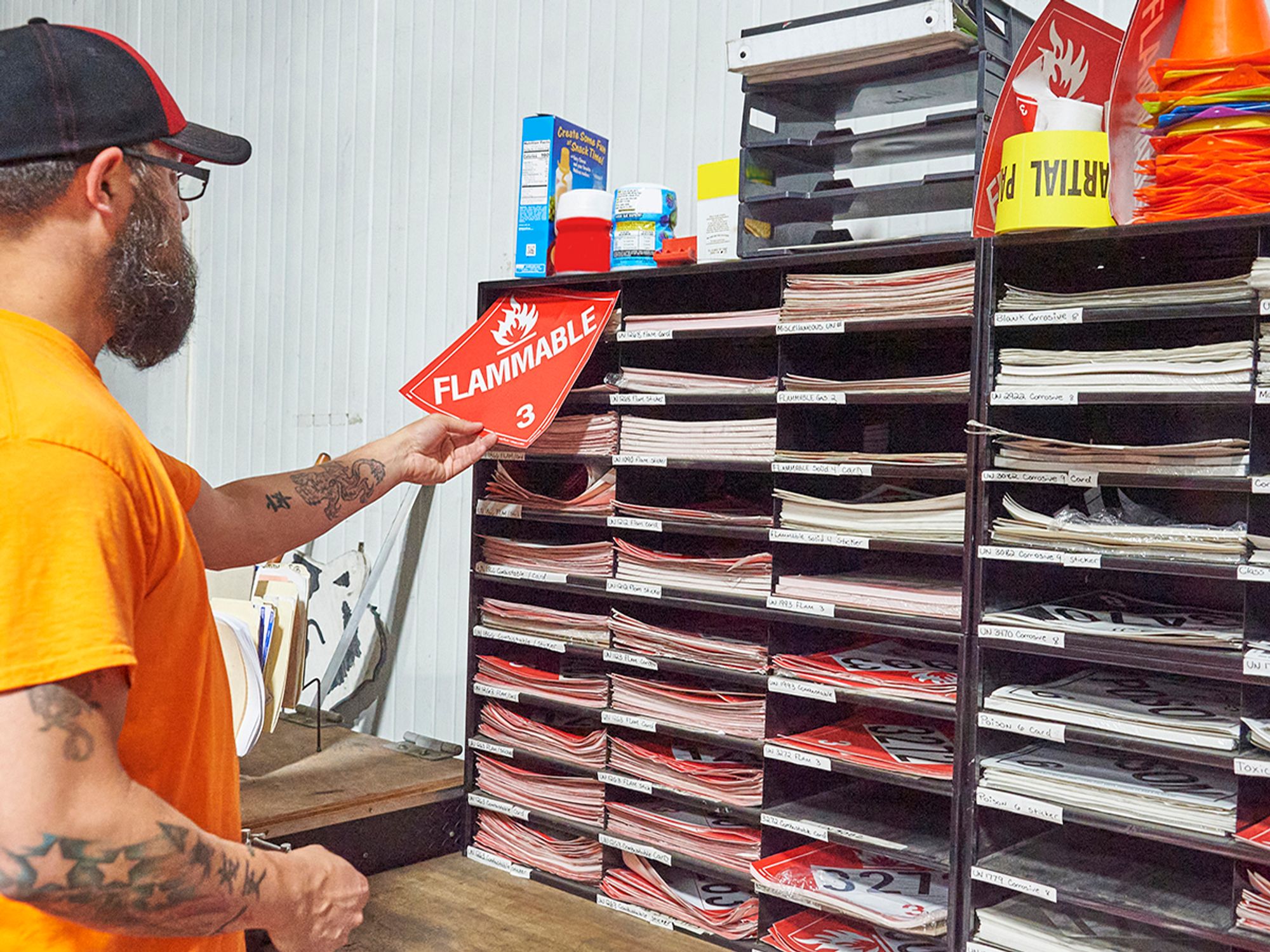What exceptions apply to placarding?

- Placarding exceptions apply to the requirements for placards only; the placarding exceptions are not sweeping exceptions from all HMR.
- A commonly used placarding exception can be used when transporting less than 1,001 pounds of non-bulk Table 2 materials.
Less than 1,001 pounds of Table 2 materials
A transport vehicle or freight container that contains less than 1,001 pounds (454 kg) aggregate gross weight of hazardous materials in non-bulk packages covered by Table 2 is not required to display placards. This exception does not apply to bulk packages or materials with subsidiary hazards that must be placarded according to 172.505.
Did you know?
A Class 9 placard is not required for domestic transportation. However, a bulk packaging must be marked with the appropriate identification number as required by the Hazardous Materials Regulations (HMR).

If a transport vehicle, railcar, freight container, or unit load device contains non-bulk packagings of two or more categories of Table 2 materials, the “DANGEROUS” placard may be displayed instead of the separate placards specified in Table 2.
When 2,205 pounds (1,000 kg) or more of one hazard category is loaded at one facility on one vehicle, railcar, freight container, or unit load device, the “DANGEROUS” placard cannot be used for that one hazard category; instead, the placard specified in Table 2 must be displayed.
If three or more different categories of Table 2 materials are in one vehicle, railcar, freight container, or unit load device, and one material is over the 2,205-lb (1,000-kg) limit and requires an individual class placard, the “DANGEROUS” placard may still be used for the other categories of Table 2 material that fall below the 2,205-lb (1,000-kg) limit.
Placard exceptions by hazard class
Class 1 (172.504)
When more than one division placard is required for Class 1 materials on a transport vehicle, rail car, freight container, or unit load device, only the placard representing the lowest division number must be displayed.
The “EXPLOSIVES” 1.4 placard is not required for those Division 1.4 Compatibility Group S (1.4S) materials that are not required to be labeled 1.4S.
For shipments of Class 1 (explosive) materials by aircraft or vessel, the applicable compatibility group letter must be displayed on the required placards.
Gases (172.504)
A “NON-FLAMMABLE GAS” placard is not required on a motor vehicle containing a non-flammable gas if the vehicle contains flammable gas or oxygen and is placarded “FLAMMABLE GAS” or “OXYGEN,” as required.
The “OXYGEN” placard may be used for domestic shipments of oxygen, compressed or oxygen, refrigerated liquid in place of a “NON-FLAMMABLE GAS” placard.
Flammables (172.504)
A “COMBUSTIBLE” placard is not required on a cargo tank, portable tank, or compartmented tank car containing both flammable and combustible liquids when placarded “FLAMMABLE.”
Oxidizers (172.504)
“OXIDIZER” placards are not required for Division 5.1 materials on freight containers, unit load devices, transport vehicles, or rail cars that also contain Division 1.1 or 1.2 materials and are placarded with “EXPLOSIVES” 1.1 or 1.2 placards, as required.
For transportation by transport vehicle or railcar only: An “OXIDIZER” placard is not required for Division 5.1 materials on a transport vehicle, railcar, or freight container that also contains Division 1.5 materials and is placarded with “EXPLOSIVES” 1.5 placards, as required.
Poisons (172.504)
For domestic transportation:
- A “POISON” placard is not required on a transport vehicle or freight container required to display a “POISON INHALATION HAZARD” or “POISON GAS” placard, and
- A “POISON INHALATION HAZARD” placard is not required on a transport vehicle or freight container that is already placarded with a “POISON GAS” placard.
For Division 6.1, Packing Group III materials, a “POISON” placard may be modified to display the text “PG III” below the midline of the placard in place of the word “POISON.”
Class 9 (172.504)
Class 9 placards are not required for domestic transportation.
Freight containers/unit load devices and placards for rail (172.512)
A motor vehicle transporting freight containers or aircraft unit load devices that are not required to be placarded is not required to display placards.
Freight containers and unit load devices being transported for delivery to a consignee immediately after an air or water shipment are also allowed to use the exception for less than 1,001 pounds (454 kg) of Table 2 materials.
A freight container or aircraft unit load device that is only transported by air and is prepared according to Part 7, Chapter 2, Section 2.8 of the International Civil Aviation Organization (ICAO) Technical Instructions is not required to be placarded.
Rail (172.504)
A railcar loaded with a transport vehicle or freight container that is not required to be placarded is not required to display placards.
